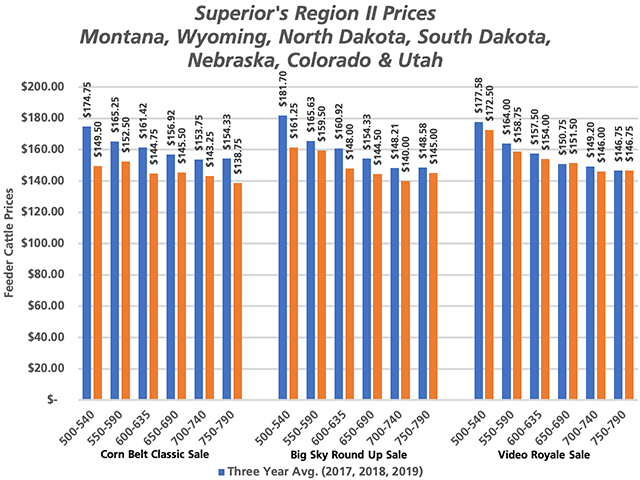Call the Market
2020's Feeder Cattle Sales and Looking Toward the Fall Run
Through the spitfire that 2020 has coined its appearance with, the spirit of cattlemen is still alive and well in the feeder cattle market. Bears would argue that the gesture "alive and well" is polite rhetoric for a complex that's overbought and soon to fall flat as feeder cattle healthily line the sandhills, northern range and feedlots of the Midwest. Meanwhile, bull-spreaders have bounced back from the hardships and have undoubtedly ran this market higher than most imagined even possible this year.
Though the market wasn't unable to dodge the hardships that consumed our lives, the board's recent vigor and constant gains through feeder cattle sales have served as a saving grace to many. Comparing Superior's sales over the last four years was insightful and aids to another quest that begs for more questions.
P[L1] D[0x0] M[300x250] OOP[F] ADUNIT[] T[]
Pinpointing how this market's fall run will turn out is about as safe as walking into Walmart coughing and sneezing or camping out under the stars in Yellowstone thinking that grizzly bears actually get full on berries.
But for whatever the market has or hasn't been, looking at Superior's sales this summer helps give cattlemen some perspective. Looking at the picture accompanied with the article, you'll notice that I compared three of Superior's yearly sales -- the Corn Belt Classis (hosted the second week of June), the Big Sky Round Up (hosted the last week of June), and the Video Royale sale (hosted the last week of July). I compiled results of these three individual sales from 2017 through the most recent 2020 sales for Region II (Montana, Wyoming, North Dakota, South Dakota, Nebraska, Colorado and Utah), which allows individual weight class comparisons to be made.
The blue bar is a representation of the 2017, 2018 and 2019 average, while the orange bar represents 2020's averages. When looking at the 2020 sale report compared to the three-year average, earlier this spring feeder cattle sold anywhere from $0.10 to $0.25 lower. As time progressed, and cattlemen felt like they had a better understanding of the market, the difference in the 2020 prices compared to the three-year average narrowed drastically. As of Superior's latest sale at the Video Royale -- Region II feeder prices were anywhere from $0.06 lower to steady with the three-year trend.
Heading into fall, cattlemen hope that this trend continues but are skeptical that it will, as the countryside is lined with cattle that need to be moved. Looking closely at the latest Cattle Inventory report doesn't help ease cattlemen's minds as the divisions of steers 500 pounds and over (15.0 million head), along with heifers 500 pounds and over (16.5 million head), are at the highest levels that the July inventory report has seen in the last 10 years.
Bulls look at what the market has done over the last six months and beam optimistically into the fall run, while bears are already fretting about how the nation will successfully move an exponential number of feeders without saturating the market and driving prices sharply lower. As the market approaches the one-year anniversary of the Holcomb, Kansas, packing plant fire (Aug. 9, 2019,) we know and fully understand that in the blink of an eye, circumstances can change and how we anticipated the market to move and react can evolve into something completely different.
ShayLe Stewart can be reached at shayLe.stewart@dtn.com
(c) Copyright 2020 DTN, LLC. All rights reserved.




